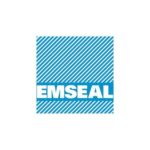- Case Studies
- Related Company
- prev
- next
Back
Case Study from:
Description
Parking Facility Expansion Joints on 2.8 million Square Foot Atlanta CONRAC are Supplied by EMSEAL
Atlanta, GA–Consolidated Rental Car Agency Center (CONRAC) or Consolidated Rental Car Parking Facility (CRCF)–no matter what you call them, these massive parking facilities are the trend for all major airports.
They have also long been a specialty of EMSEAL’s in terms of sealing the expansion joints designed into these massive decks to accommodate structural movements. In 2003, BWI’s 22-acre CRCF opened with Thermaflex by EMSEAL as the parking deck expansion joint of choice.
In 2009, the joint sealing of the CONRAC at Hartsfield-Jackson Airport in Atlanta was similarly entrusted to EMSEAL.
A major part of the airports 10-year, $6 billion-plus Capital Improvement Program (CIP), the project features some impressive statistics:
- 2 four-story parking decks
- 2.8 million square feet of parking
- More than 8,700 ready, return and storage parking spaces
- 1,200 additional ground storage spaces
- 10 rental car agencies
- 137,000 square-foot customer service center
- 6 two-car APM trains
- 1 maintenance and recovery vehicle
- 1.3 acre APM train maintenance facility
- 27 acre “Quick Turnaround” area for rental vehicles with maintenance, wash and fuel facilities
- 140 fuel pumps
- 30 wash bays with water recovery system
- The $640 million airport rental car complex features over 10,000 LF expansion joint supplied by EMSEAL and installed by Alpha
Insulation and Waterproofing of Marietta, GA.
From EMSEAL’s comprehensive line of parking deck expansion joints, the SJS System was chosen to address the large structural joint openings in the main parking deck spans.
The SJS System features an innovative non-invasive anchoring design. This means it is the only cover-plate-based expansion joint system on the market that is not anchored to, or in contact with, the concrete through metal pins, anchors, embeds, trays, or hard connections of any kind.
Instead, the stored-strain energy of compression in its precompressed, impregnated foam sealing assembly locks to the joint faces through a combination of inherent backpressure, a field-applied epoxy adhesive, and injected silicone sealant bands.
This assembly supports a central spline to which the cover plate is attached and centered.
Attachment of the plate to the foam-supported spline means the system is dampened against sound transfer. Installed over EMSEAL’s impact-absorbing nosing material, the SJS System is arguably the quietest seismic and large-joint expansion joint system available.
Structural expansion joints are design elements necessary for accommodating movements within buildings. These movements are caused by thermal changes, wind, dynamic loading and unloading, and seismic forces.
Because expansion joints bisect or isolate structures, they are essentially a gap through every element of the building–drive lanes, roadways, parking decks, floors, walls, foundations, roofs, bathrooms, suites, halls, foyers, lobbies, waterproofing elements, and structural supports. In parking decks joints must withstand traffic from cars, trucks, vans, buses, pedestrians and all kinds of wheeled maintenance equipment while at the same time must accommodate joint movement.
The SJS System is watertight too–at the surface of the joint. Self-centering bar technologies rely on gutters draped beneath the joint for water management. This means an infrastructure of pipes and drains is needed to manage-away the water that leaks through the joint.
Strip seals, compression seals, self-centering bar-and-gutter systems, are not watertight, are prone to failure, and don’t look that great either. Technology has evolved beyond these systems.
Featuring Finite Element Analysis (FEA) validated aluminum coverplates (stainless steel is an option), with an ADA compliant coefficient of friction, this SJS System is watertight, quiet, traffic durable, non-invasively anchoredand aesthetically coordinated.
In addition to SJS System, other joint systems from EMSEAL used in addressing various conditions included Thermaflexfrom on-grade to elevated deck applications, DSM System, Horizontal Colorseal, Migutrans for use in service area interior joints and Seismic Colorseal for wall joints.
The company’s unique approach to expansion joint treatment combines innovative materials technologies with a fresh look at the roles of owners, designers, general contractors, manufacturers and subcontractors, in achieving trouble-free expansion joints.
The approach is grounded in an integrated, collaborative process centered on joint treatment that requires all of these parties to think, design, detail, specify, construct, fabricate, and install three-dimensional solutions.








